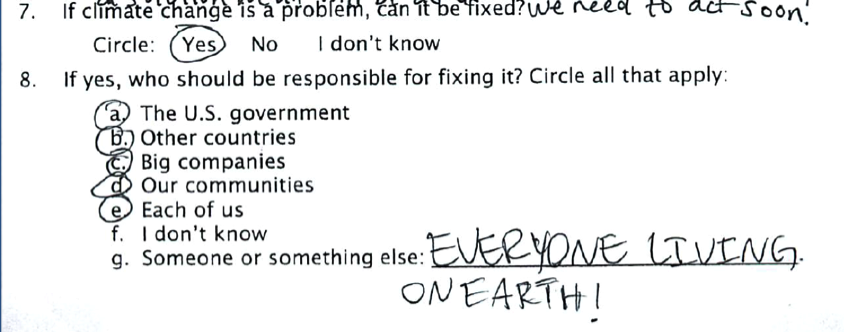Blog
In their own words: The youthful human face of Arctic policy
At the end of January, I attended the Arctic Encounter Symposium at the University of Washington Law School in Seattle, Washington. The title of the symposium was “Charting a Path to U.S. Leadership in the Far North,” and the theme was planning for the United States’s two-year chairmanship of the Arctic Council, which starts next month.
At that meeting, we heard from the U.S. Department of State on their priorities , which include: (1) safety, security and stewardship, (2) improving economic and living conditions, and (3) addressing the impacts of climate change. Each of these had a plethora of sub-bullets and to-do lists spanning topics from search-and-rescue plans to addressing food security and ocean acidification. Many distinguished scientists and policy makers from across the globe also spoke about Arctic economics, the people who live in and rely on the Arctic, and the needs of the Arctic itself.
It wasn’t until the early morning of the second day that a presentation really put a human face on the need for these Arctic efforts (see it here). The symposium’s organizer, Rachel Kallander, a third year law student at the University of Washington, presented powerful testimony from a survey of students, grades 5–8, living in the remotest corners of Alaska’s Arctic, on their experiences and observations on the effects of climate change. The presentation showed that 62% of these kids think climate change is or will be a problem, and provided insight into their lives through their own words.
Many Arctic thought leaders spend much time considering the physical issues abstractly (e.g. shipping, ports, movement of goods) or in terms of economics (e.g. revenue, drilling opportunities, insurance costs). Fewer of us take the time to consider these issues on a human scale: how will families, communities, and cultures be affected by our policy decisions?
The youth surveyed were at no loss for words when asked about the impact of climate change on their lives. For them, the changes they are experiencing in their environment affect their very subsistence and way of life. Only through the complete honesty of youth is there such lack of confusion or hesitation: these kids know the impacts of climate change and understand what it will mean for their lives, their families, and their communities.



Their clear conviction extends to what they see as main sources of these issues in their communities: resource development and the use of fossil fuels.

Perhaps most importantly, they expressed not only their own fears, but also the collective anxieties of their communities, which critically depend on their surrounding environment.



The hurdles on the path toward a more prosperous and sustainable Arctic will not be easily cleared. The U.S will have to balance climate responsibility and economic development during its time chairing the Arctic Council. The decisions made will affect the delicate balance throughout the Arctic, and the world. But, as the testimony of these young people remind us, discussion of the “Arctic” should not treat it as a remote and desolate abstraction, ignoring the people who live and thrive there.

The Arctic is a delicate ecosystem, requiring a careful balance between conservation and development to ensure prosperity for future generations. Conservation-minded folks advocate a precautionary approach to avoid risks where the outcome is possible catastrophe. While people won’t always agree about the right way to move forward in an area like the Arctic, let us remember the importance of balancing priorities with consequences and that our decisions are not just about whales, birds, or oil. They are also about communities, families; people.

When writing about the Arctic, I often get wrapped up in the idea of a pristine wilderness, the last frontier, and the breathtaking photos of landscapes and wildlife. Even as I continue to think about offshore development, increased shipping, and the impact of these activities, I strive to remember that we do not inherit the Earth from our ancestors; we borrow it from our children. To me, this means creating a future that certainly includes environmental conservation, but also food, energy, and economic security. Most importantly, it means listening to future leaders and hearing their messages, their fears and their hopes and respecting them as we cooperate to accomplish those future goals.

When we talk about the future of the Arctic, our plans must be discussed in the context of an honest analysis for both benefits and costs—particularly, how those plans will affect the people living there now and the generations whose needs and hopes are not always consulted. As so clearly stated by one of the young respondents when asked what they would want Arctic leaders to know:

